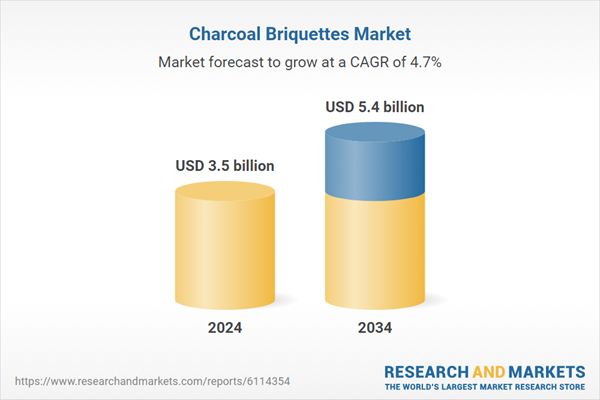Technological progress in the manufacturing process has further enhanced the appeal of these products. With better compression techniques and the use of natural binding agents, modern briquettes deliver longer burn times, improved heat efficiency, and produce minimal smoke. This shift toward higher-quality, low-emission products is shaping the future direction of the market.
The pillow-shaped briquettes segment held a 36.6% share in 2024 and is projected to grow at a CAGR of 5.6% through 2034. Their consistent burn rate, uniform shape, and ease of stacking make them a preferred option for grilling and barbecuing. The flat and wide design ensures even heat distribution, making it ideal for cooking. High levels of automation in their production keep quality consistent and manufacturing costs low, giving them an edge in commercial distribution and retail shelf appeal.
The hardwood charcoal briquettes segment held 69% share in 2024 and is set to grow at 4.9% CAGR between 2025 and 2034. These briquettes are made from dense wood types such as hickory, oak, and maple, which offer longer burning times, reduced ash, and high heat output. They are favored by consumers seeking clean, reliable fuel for cooking and industrial uses. Their superior performance in terms of combustion and emissions control positions them as the top choice in both residential and commercial segments.
Asia-Pacific Charcoal Briquettes Market held 42.4% share in 2024 and is projected to reach USD 700 million by 2034. China’s vast population, widespread use of charcoal in semi-urban and rural areas, and its robust domestic manufacturing capabilities contribute significantly to its market dominance. The abundance of raw biomass materials, such as forestry and agricultural waste, has also enabled cost-effective, large-scale production. Charcoal briquettes continue to serve as an essential and affordable energy source across many regions of the country.
Key companies shaping the competitive landscape of the Charcoal Briquettes Industry include Green Carb Technologies, Ferrocycle, Kingsford Products Company, Royal Oak, Duraflame, Ash Briquettes LTD, Subur Tiasa, Pacific Resources International Pty Ltd, Ralco Industries, Namchar, OK Charcoal, B&B Charcoal, Mitsui & Co, E & C Charcoal, and Baccar Indo Resources. To reinforce their market position, companies in the charcoal briquettes sector are prioritizing investments in sustainable sourcing, product innovation, and clean-burning technologies.
Manufacturers are focusing on eco-friendly production methods and incorporating renewable feedstocks to reduce carbon footprints. Strategic partnerships, regional expansions, and automated manufacturing upgrades help improve efficiency and scalability. Many brands are also developing premium briquettes tailored to the growing demand for high-performance grilling fuels, while maintaining affordability and environmental compliance to strengthen global presence and customer loyalty.
Comprehensive Market Analysis and Forecast
- Industry trends, key growth drivers, challenges, future opportunities, and regulatory landscape
- Competitive landscape with Porter’s Five Forces and PESTEL analysis
- Market size, segmentation, and regional forecasts
- In-depth company profiles, business strategies, financial insights, and SWOT analysis
This product will be delivered within 2-4 business days.
Table of Contents
Companies Mentioned
- Ash Briquettes LTD
- B&B Charcoal
- Baccar Indo Resources
- Duraflame
- E & C Charcoal
- Ferrocycle
- Green Carb Technologies
- Kingsford Products Company
- Mitsui & Co
- Namchar
- OK Charcoal
- Pacific Resources International Pty Ltd
- Ralco Industries
- Royal Oak
- Subur Tiasa
Table Information
| Report Attribute | Details |
|---|---|
| No. of Pages | 160 |
| Published | July 2025 |
| Forecast Period | 2024 - 2034 |
| Estimated Market Value ( USD | $ 3.5 billion |
| Forecasted Market Value ( USD | $ 5.4 billion |
| Compound Annual Growth Rate | 4.7% |
| Regions Covered | Global |
| No. of Companies Mentioned | 15 |









